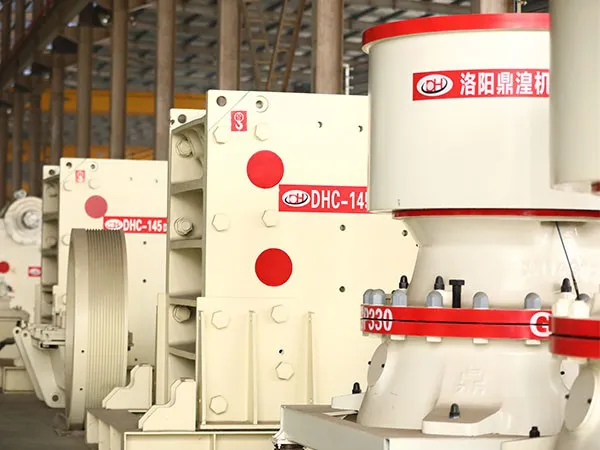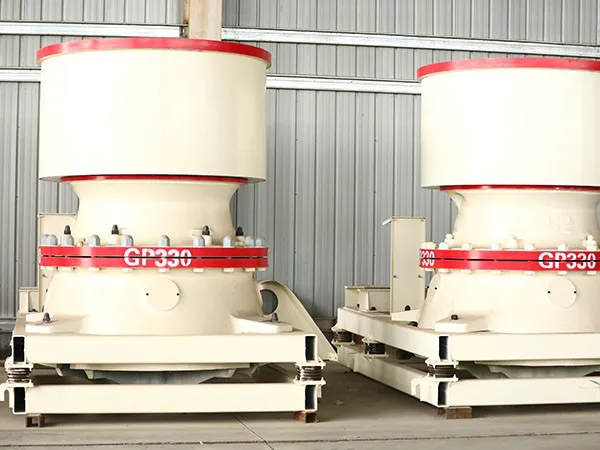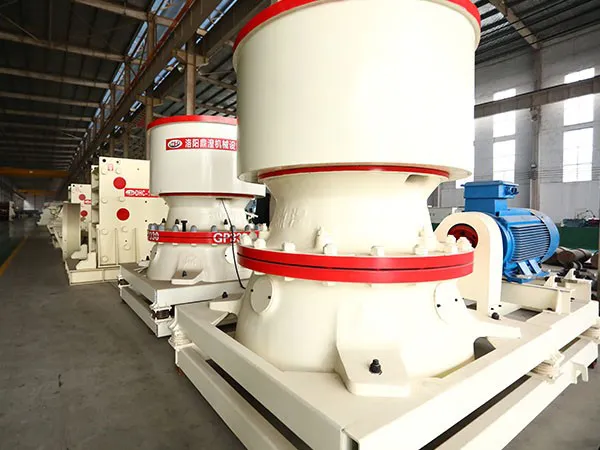Adjusting the speed of a cone crusher, specifically the eccentric speed (the speed at which the mainshaft gyrates), is a critical operational parameter that impacts throughput, product gradation, power draw, and wear.

Variable Frequency Drive (VFD) / Variable Speed Drive (VSD):
How it works: A VFD controls the electrical frequency supplied to the crusher's electric motor. By changing the frequency, the motor's RPM changes, which in turn changes the speed of the crusher's drive pulley and thus the eccentric speed.
Advantages:
Offers precise and continuous speed adjustment.
Can be adjusted while the crusher is running (though often done incrementally).
Allows for soft starting, reducing mechanical stress.
Can be integrated into plant automation systems.
Implementation: This is the most common and flexible method in modern plants. It requires installing a VFD unit appropriately sized for the crusher motor.
How it works: The crusher is driven by a motor via a belt and pulley system. The speed ratio is determined by the diameter of the motor pulley (drive sheave) and the crusher pulley (driven sheave).
Crusher Speed = Motor Speed × (Diameter of Motor Pulley / Diameter of Crusher Pulley)
To change the crusher speed, you would replace either the motor pulley or the crusher pulley (or both) with ones of different diameters.
To increase crusher speed: Use a larger motor pulley or a smaller crusher pulley.
To decrease crusher speed: Use a smaller motor pulley or a larger crusher pulley.
Disadvantages:
Requires downtime to change pulleys.
Offers stepped, not continuous, adjustment.
Belt tension needs to be readjusted.
More labor-intensive.
Implementation: This is an older method or used for significant, less frequent speed changes.

Product Gradation:
Higher Speed: Generally produces a finer product and more cubical particles. It increases the number of crushing actions per unit of time.
Lower Speed: Generally produces a coarser product.
Throughput (Capacity):
Speed impacts how quickly material can pass through the crushing chamber. There's an optimal speed range for maximum throughput depending on other settings and material. Too high a speed can sometimes reduce throughput if material doesn't have enough time to fall into the chamber properly.
Feed Material:
Hard, Abrasive Materials: Sometimes a slightly lower speed is preferred to reduce wear rates, though this needs to be balanced with production requirements.
Softer, Less Abrasive Materials: Can often be processed at higher speeds.
Closed Side Setting (CSS):
Speed and CSS are interlinked. Adjusting one often necessitates considering the other. For instance, a very fine CSS might benefit from a higher speed to prevent packing and maintain flow.
Liner Profile:
The shape of the mantle and bowl liner affects the crushing chamber volume and nip angle. The optimal speed can vary with different liner profiles.
Power Draw:
Higher speeds generally increase power consumption. Ensure the motor and drive system can handle the increased load.
Wear Rate:
Higher speeds can increase the wear rate on liners due to more frequent impacts and abrasion.
Choke Feeding:
Cone crushers operate most efficiently when choke-fed. Speed adjustments should aim to maintain this condition.
Manufacturer's Recommendations:
Crucial: Always consult the cone crusher manufacturer's operating manual. They will provide recommended speed ranges for different applications, liner types, and materials. Exceeding these recommendations can void warranties or lead to premature failure.

Consult the Manual: Understand the recommended speed range and limitations for your specific crusher model and application.
Safety First:
LOTO (Lockout/Tagout): Ensure the crusher is de-energized and locked out before making any physical changes (like pulley swaps).
Use qualified personnel.
Determine Desired Outcome: Are you trying to achieve finer product, higher throughput, or reduce wear?
Make Adjustments:
VFD: Adjust the frequency setting on the VFD control panel. Make small, incremental changes.
Pulleys: Shut down, lock out, remove guards, loosen belts, replace the pulley(s), reinstall and tension belts, replace guards.
Monitor Performance:
After adjustment, run the crusher and monitor key parameters:
Product size distribution (sieve analysis).
Throughput (tons per hour).
Power draw (amps/kW).
Crusher operating pressure (if applicable).
Any unusual noises or vibrations.
Iterate: Make further small adjustments as needed, monitoring the results each time until the desired performance is achieved.
Document: Record the changes made and the resulting performance for future reference.
Important Note: The "speed" being discussed is the eccentric speed. The head of the cone crusher also spins (head spin), but this is usually a consequence of the eccentric motion and friction, not directly controlled as a primary adjustment parameter.Always prioritize safety and consult your crusher's manufacturer for specific guidance.
Advanced Eco-Friendly Impact Crushers: Optimizing Industrial Efficiency and Sustainability
2025-11-24 02:27Impact Crusher vs Jaw Crusher: Key Differences, Applications & Efficiency Guide
2025-11-19 03:12Impact Crusher Maintenance Guide: Tips to Maximize Efficiency and Extend Lifespan
2025-11-15 05:38Impact Crusher Wear Parts Replacement: Boost Performance, Extend Lifespan, and Minimize Downtime
2025-11-08 16:16Address: Luoyang Luoxin Industrial Park, Henan,China
E-mail: sales@yd-crusher.com
Phone: 86-139-3993-0123

Yude
Mechanical
Create the greatest value for customers
Provide the best quality products and services
86-139-3993-0123
sales@yd-crusher.com
Luoyang Luoxin Industrial Park, Henan,China